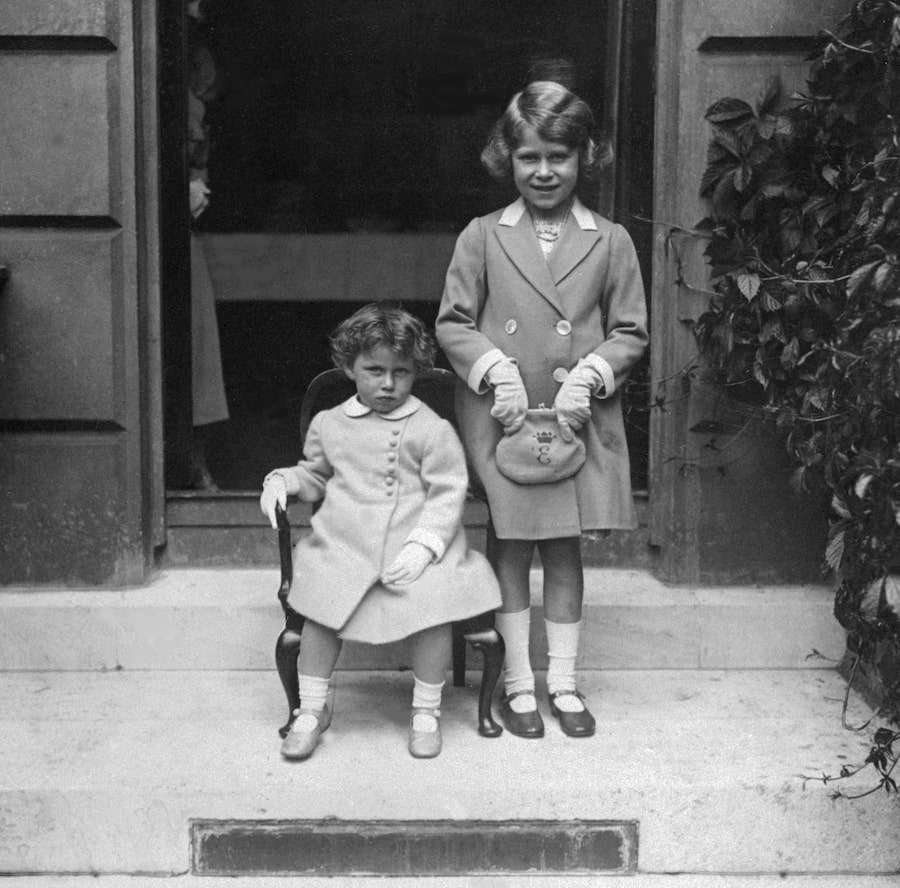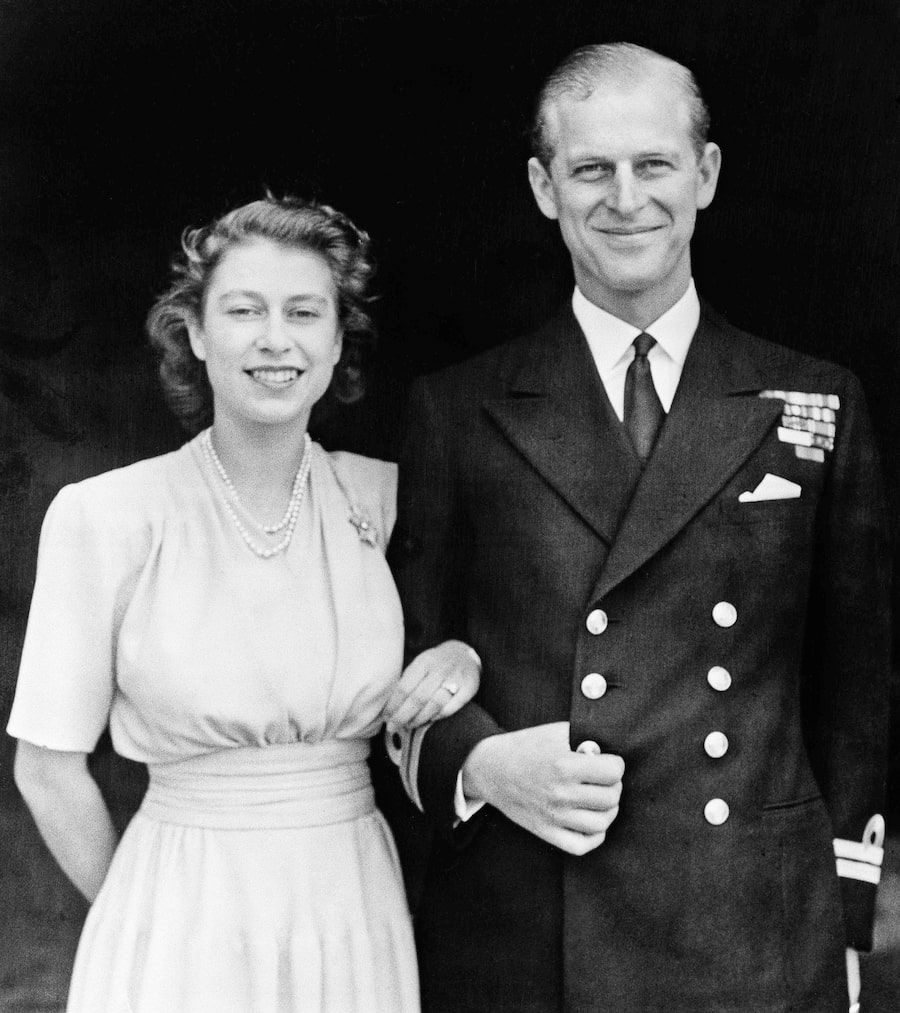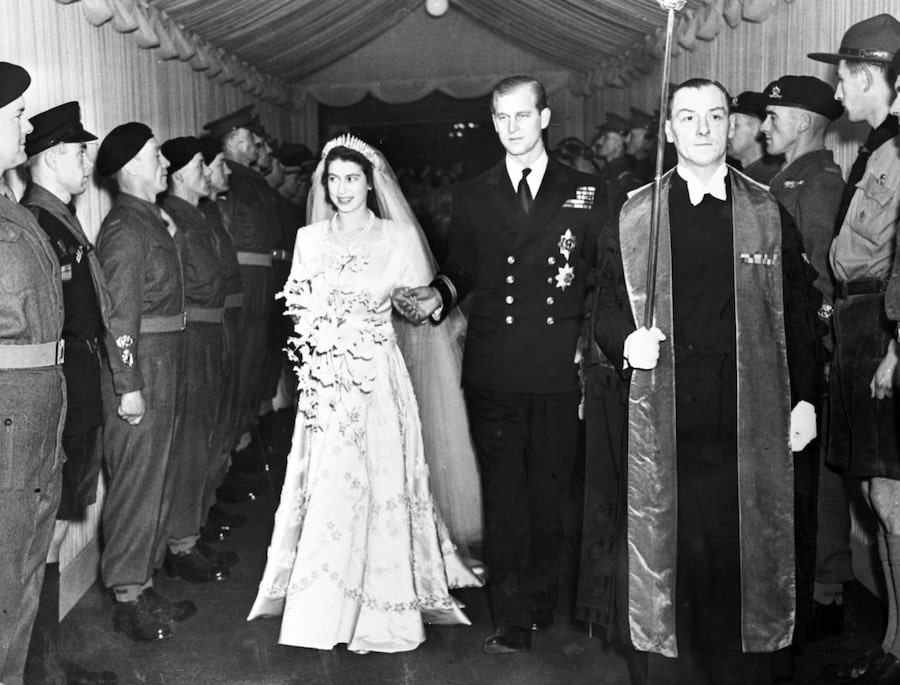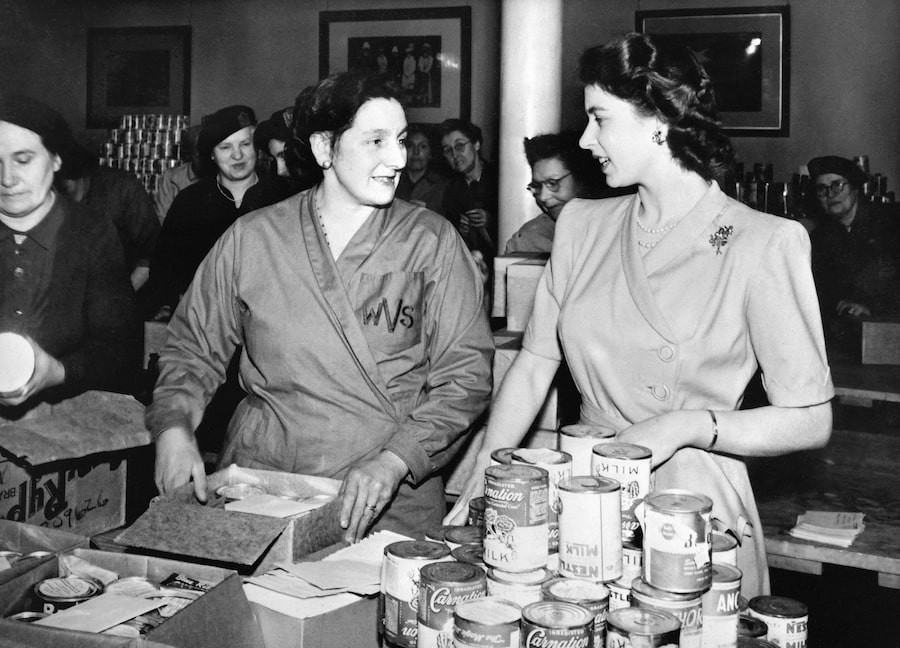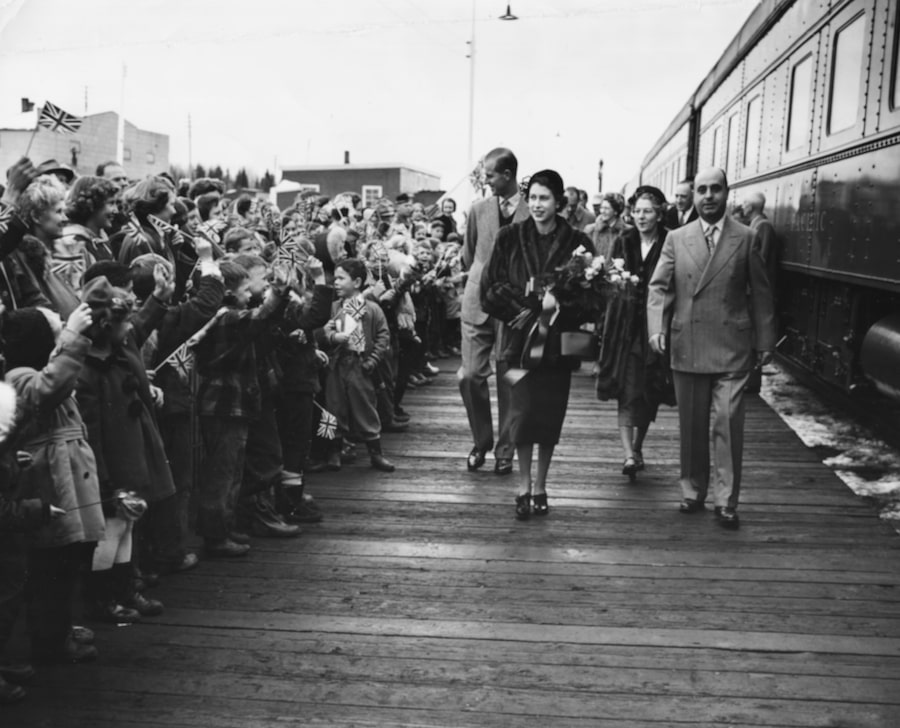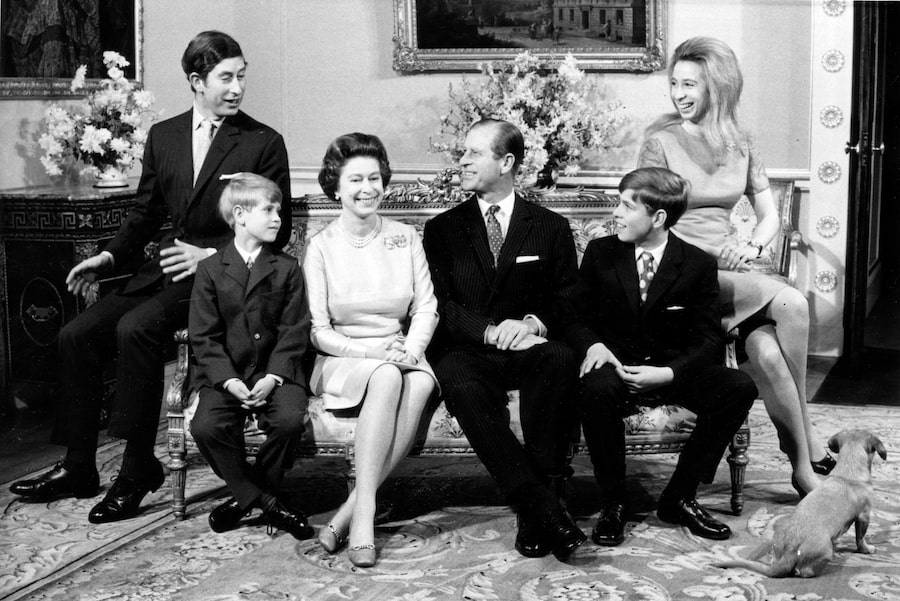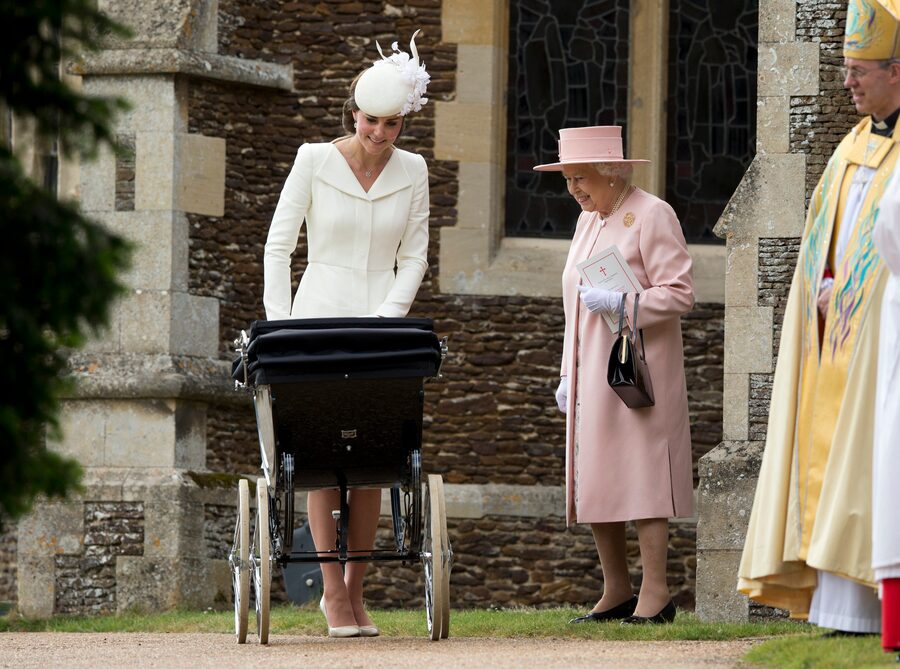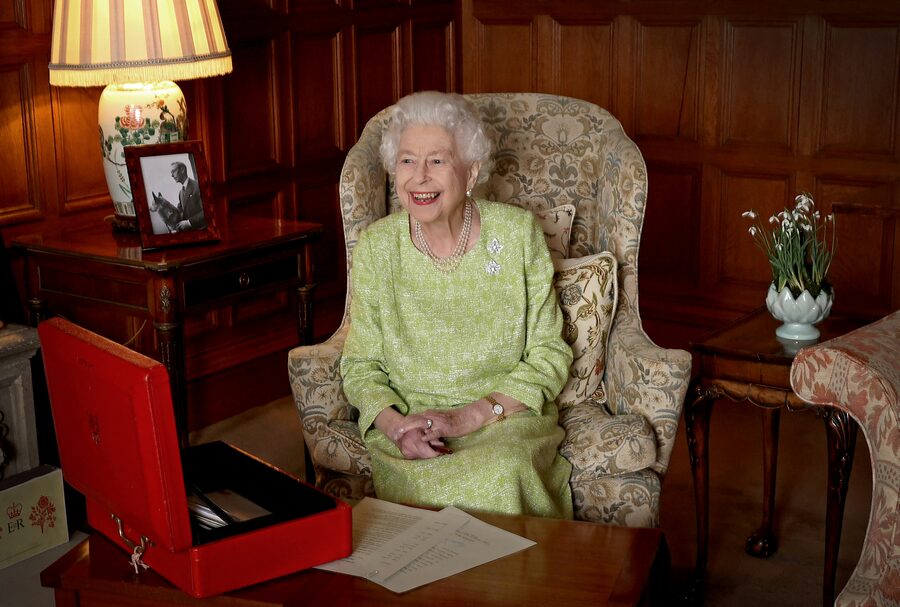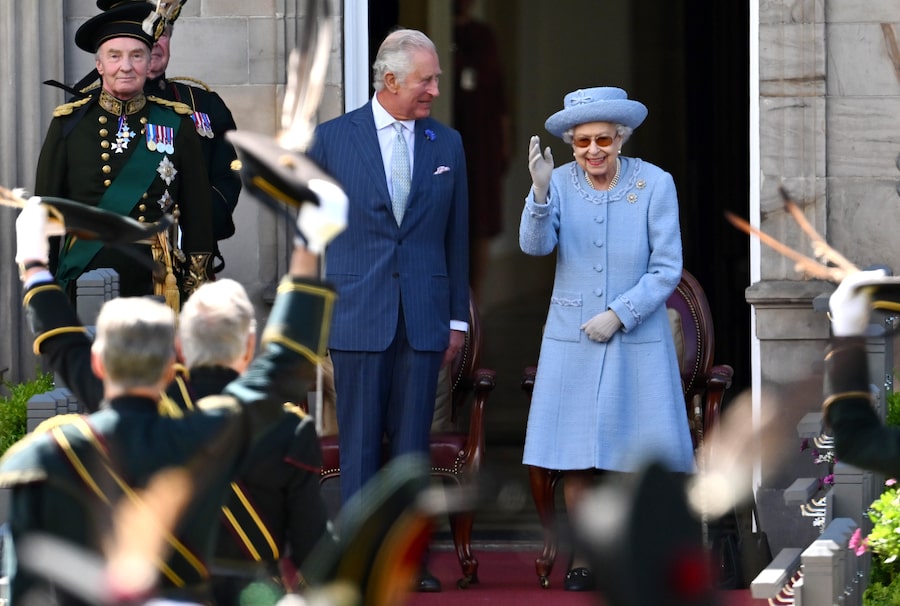Jennifer Robson holds a doctorate in British history from the University of Oxford and is the author of seven historical novels, among them The Gown and the forthcoming Coronation Year.
As I was attempting to gather my thoughts and emotions about the life and death of the Queen, I unearthed a strange little book titled Dreams About H.M. The Queen and Other Members of the Royal Family. Published in 1972 and long out of print, it is less a sociological study than it is a collection of anecdotes, gathered with little regard to statistical significance, which attempts to impose a sort of order upon the dreams that ordinary Britons had about the Queen as she marked the 20th anniversary of her accession to the throne.
I wasn’t the least surprised to discover that the greatest proportion of dreams about the Queen, by some considerable measure, centred upon having tea with her. Far less common were dreams in which the Queen came to the dreamer’s aid or did some favour for her; and least common of all were dreams in which the ordinary person became the Queen or was compelled to step into her shoes and take on her duties.
Herewith a confession: I, too, frequently dreamed of the Queen coming to tea. The setting was invariably my own messy living room; sometimes I dreamed only of the anxiety-laden process of tidying up for her and woke before she even arrived. There was often a moment of consternation on my part when I realized cat fur was all over the furniture, but she never seemed to mind. She also affected not to notice when I made a hash of pouring out the tea because my hands were trembling from nerves, and she always accepted her cup of tea with real pleasure and complimented me on the cake I had made for her. When I woke, I could never quite recall our conversations, but I could still picture her face as she listened, her bright blue eyes twinkling, her grin as wide and toothy as ever.
The Queen is amused at remark by a First World War veteran in Ottawa in 1977.Erik Christensen/The Globe and Mail
And now she is gone, and even as I struggle to make sense of that unalterable fact, I also find myself wondering if her life was indeed as significant as my sentiments suggest. Does Elizabeth II deserve a place among the pantheon of historical figures whose reputations long outlive their deaths, or was it merely a confluence of inherited influence, historical happenstance and rude good health that kept her front and centre on the world stage for something close to a century?
When Elizabeth died on Sept. 8, she was both the longest-living and longest-reigning of Britain’s monarchs. The unprecedented length of her rule was only possible because of her father’s early death; in the normal course of things, George VI ought to have lived to a ripe old age, leaving his daughter to assume the throne when she was in her 50s or 60s at the earliest. Instead he died at 56, when Elizabeth was only 25.
She was, admittedly, not so very young for a monarch to ascend the throne; other kings and queens known for their long reigns, among them Sobhuza II of Swaziland and Louis XIV of France, were children upon their accessions, giving them a distinct head start in the longevity game. All the same, her father died far sooner than she had expected, and the first photographs taken of her after his death are a stark reminder of the grief and profound isolation that accompanied her accession to the throne.
It’s also the case that Elizabeth was far more visible than other long-lived monarchs, in large part because her life and reign neatly paralleled the growth of modern technologies that, in turn, propelled an explosive growth in the speed and ubiquity of our media. By way of comparison, it’s worth examining the visibility of two previous queens, Elizabeth I and Victoria.
Elizabeth I, shown in the so-called Armada Portrait commemorating England's defeat of a Spanish invasion force, shown in ruins behind her.The Art Fund via AP
Fewer than 150 original paintings or drawings of the first Elizabeth (1533-1603) survive, with many thousands of copies produced during her reign; these were produced under a strict set of guidelines that forbade images that deviated from an agreed-upon portrayal of the queen as an ever-youthful Gloriana. Elizabeth never left England, and though she was famed for her “progresses” through the countryside – more than one nobleman beggared himself while hosting the monarch – few ordinary people ever had the chance to set eyes upon their queen, let alone meet or speak with her.
Moving ahead to the 19th century, Queen Victoria (1819-1901) was depicted in several hundred paintings and many thousands of photographs; she and her husband, Prince Albert, enthusiastically embraced the new medium of photography and are among the first notable historical figures to have been immortalized on camera. Over the course of her long reign, Queen Victoria’s face became instantly recognizable to a large swath of the world’s population, in part because of the rapid growth of the popular press and the ubiquity of her portrait on increasingly inexpensive consumer goods. At the same time, her withdrawal into seclusion after Albert’s death in 1861, prompted at first by her grief, and then latterly by her distaste at being the object of the public’s increasingly avid gaze, also led to an idealized abstraction becoming far better known than Victoria the human being. Her exophthalmic gaze softened, her widow’s weeds rendered as a cloak of noble suffering and self-sacrifice, Victoria Regina Imperatrix was an essentially fictional creation whose living embodiment was scarcely ever seen or heard by the millions over whom she reigned.
The day after Queen Elizabeth's death, paintings of her ancestor Victoria hang at the Q Bar of the Fairmont Empress Hotel in Victoria, the British Columbia capital named in her honour.Chad Hipolito /The Canadian Press
:format(jpeg)/cloudfront-us-east-1.images.arcpublishing.com/tgam/LE5SGQMY2JIXZGWZGMZLIMYT6M.jpg)
:format(jpeg)/cloudfront-us-east-1.images.arcpublishing.com/tgam/BB67PFUQENOPLBWAID6I3NWQSQ.jpg)
And then we come to the late Queen, whose travels criss-crossed the globe for many decades, whose annual Christmas speech was watched faithfully by millions, and whose image can reasonably be accounted one of the most reproduced, and stands among the most recognizable, in human history. Governments came and went, wars were fought and borders changed, generations within our own families were born, lived out their lives, and died, and always Elizabeth was there, outpacing living memory, her face and voice bracingly familiar.
My own mother died more than 30 years ago, and I now have difficulty in remembering her features without the prompt of a treasured photograph. Yet I can close my eyes and see the Queen’s face with startling clarity, and not only as she was in recent years. I can picture her as a girl in the early 1930s; on her wedding day in 1947; at her Coronation in 1953; as a grandmother in the early 2000s; and desolate and alone at her husband’s funeral in 2021.
Yet as ever-present as she was in our collective consciousness, Elizabeth herself remained a mystery. This was not, as some would have had it, because her character or intellect were lacking; while her formal education was decidedly sketchy, her on-the-job training was formidable and, compared with that of most other modern heads of state, unsurpassed.
Rather, she appeared as a blank slate to most of us for one reason: She chose to do so. Not only did her calculated appearance of impartiality on most subjects help to fulfill her constitutional obligation to remain politically neutral, but it also meant the true Elizabeth, the woman only her closest relatives and friends ever knew, could remain hidden from the public eye.
From time to time over the decades, keen observers were able to discern glimpses of this Elizabeth, rare moments when the mask of stoic queenship slipped, if only a little, to reveal the woman whom only a handful of people truly knew. She was a talented mimic – oh, to have witnessed her skewering of Margaret Thatcher! – and was blessed with a healthy understanding of the ironic and its comic implications. She was more curious, and more empathetic, than the timed-to-the-minute nature of her public appearances usually allowed.
She was human, but she only felt able to fully express that humanity when away from the public eye. It was a calculated choice that she made, and from which she never deviated, for the entirety of her life. It is one of the reasons we mourn her now as more than a distant head of state, more than an elderly lady who lived a long and comfortable life, and far more than a relic of a bygone age.

Queen Elizabeth leaves Westminster Abbey at her coronation in 1953.The Associated Press
If another person entirely had been crowned in 1953 and had remained on the throne for the best part of a century, we would undoubtedly be discussing them today. Yet how much of our talk would be devoted to a frank and even withering assessment of that phantom monarch’s failures and frailties, missteps and malapropisms and outright mistakes?
It is rare indeed for a public figure to die at a great age having lost or surrendered none of their stature. Most people who dominate the news, for instance politicians, captains of industry, actors, artists, writers and scientists, retire and are able to enjoy (or just as likely rail against) the tranquillity of their twilight years. The Queen, however, was a figure on the world stage from the moment her father became king on Dec. 11, 1936, and even before that she was familiar to millions worldwide as King George V’s adored granddaughter.
Marooned under a klieg light of unrelenting scrutiny, the Queen managed to retain her reputation and her dignity as few other public figures have done, her own descendants included, and she did so for the rest of her life. She was sheltered and protected, yes; but she was also formidably disciplined. To a large degree her character was formed not only by the crucible of the Second World War, but also by the preceding familial trauma of the Abdication Crisis of 1936. When her uncle Edward VIII, unwilling to set aside his relationship with the twice-divorced American Wallis Simpson, abdicated in favour of his younger brother, Elizabeth became the heiress presumptive to the throne. Her carefree days of semi-obscurity at an end, a life of unrelenting duty began.
From those early years sprang her self-control, disinclination to complain and innate emotional reserve; it was these qualities that helped to propel her through countless thousands of official engagements without ever succumbing, as far as we know, to physical or mental exhaustion.
The Queen never gave an interview, though upon rare occasions she consented to be filmed while discussing such anodyne topics as her recollections of the coronation. She rarely did more than hint at her private feelings on any subject, and not only because of her personal reticence but also because she understood that her very inscrutability allowed her to be most things to most people.
To those who lived through the war and its aftermath, together with their children, she represented a vital connection to those years of trial and trauma. To those of us who consider ourselves middle-aged, and who have never known a world without her, she was the ever-present matriarch who remained steadfastly there, always herself, always unchanging, while the world around her transformed, in ways both good and awful, within the space of our fragile lifetimes. To our children and grandchildren, she was far less present, an old lady on a distant throne, ever harder to believe in as her health declined and her public appearances grew increasingly rare.
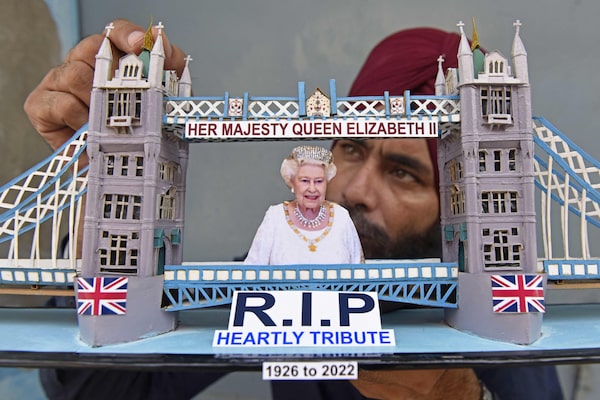
:format(jpeg)/cloudfront-us-east-1.images.arcpublishing.com/tgam/VG5NSDIEAJIK3KQG2TXMQSARLE.JPG)
:format(jpeg)/cloudfront-us-east-1.images.arcpublishing.com/tgam/XUN4D2OTYJDQXJKQ655KPIIWNM.jpg)
Elizabeth II was not perfect, and her actions and reactions over her reign deserve to be examined, assessed and criticized where lacking; but she also had a demanding and often boring and tiresome job for more than 70 years and cannot reasonably be said to have let anyone down.
It’s worth considering what that sort of work entails and how draining it can be, and since few of us can have any direct experience of such obligations, I suggest we look instead to an occasion in our own lives where we have been the centre of attention. Imagine, for instance, your wedding day. You know you will be the focus of all eyes, which is rather exciting, and you know it will be exhausting, but again it’s only the one day and you’ll soon be back to normal life. Not so bad, is it? Now I want you to ratchet up the stakes so that most of your interactions on your wedding day will not be with those who know you well and love you best, but rather with people you’ve never before met. These strangers may well hold you in high esteem, but their simple presence means you cannot, not for one moment, let down your guard. You must be perfect.
But what if such attention never ends, because you are the monarch and your entire life is dominated by such occasions? You cannot retreat to the sidelines if you’re feeling tired or unhappy or unwell. Your every interaction with the strangers you meet will be a moment of tremendous importance to them, a moment to be lovingly burnished in the retelling, and any perceived instance of hauteur, disinterest, boredom or irritation from you will not only ruin that person’s memories of the interaction but also, however minutely, affect the reputation and stability of the institution to which you have sworn to devote your life.
Can you fairly say you would enjoy such an existence? Can you be certain that you would manage to be polite, friendly and engaging to every single person you met? Day after day after day, year after year, decade upon decade, all the while knowing there would never be an end to it?
The Queen’s life was one of enormous privilege and ease, and she was cushioned from day-to-day unpleasantries to a degree only a rare few will ever experience. All the same, I can discern little evidence of her enjoying the more extreme manifestations of her glorified existence. Had she been given a choice, she would likely have preferred to live quietly in the countryside surrounded by dogs and horses. But she was never given a choice.
Reflect upon that for a moment. From the age of 10, Elizabeth was told and reminded and counselled that her sacred duty was to one day ascend to the throne and spend the rest of her life as monarch. Of course she went along with it – how could she have resisted, given the turmoil of the Abdication Crisis and the trauma of witnessing years of wartime strain destroy her father’s health?
The future Queen delivers her 21st birthday speech in Cape Town on April 21, 1947.The Associated Press
On April 21, 1947, her 21st birthday, Princess Elizabeth made a speech in which she promised that “my whole life whether it be long or short shall be devoted to your service.” A little more than six years later, at the end of a lengthy oath during her Coronation service, she vowed, “the things which I have here before promised, I will perform and keep. So help me God.”
In the close to seven decades of her life that followed, she did not retreat from those vows. She did not abdicate, nor did she retire, and even at age 96, constrained by the pandemic, shaken by the death of her husband, and increasingly affected by the infirmities of old age, she carried out her engagements with discipline, energy and stoic good humour.
The isolation of her life, which began when her father became king and calcified still further when she became queen, never ended. There is no evidence that she questioned or even resented it, but there is, I feel, something monstrous about a way of life that demanded she forever remain apart. Her own family members, with the exception of her mother and husband, were to bow or curtsy upon seeing her for the first time each day. Her closest friends, with few exceptions, were to call her “ma’am” rather than her given name. Her own children, when speaking of her to others, were expected to refer to her as the Queen rather than “my mother,” and when they did, on occasion, refer to her as Mama, or her grandchildren revealed that they knew her as Granny, the informality of it was invariably startling.
Yet she stuck to the vows she had made, and the very fact that she was so good at what she did had the effect of masking the ever-diminishing relevance of her position as hereditary head of state of the United Kingdom and, over the decades, more than 30 other countries, though by the time of her death that number had been halved.
It’s easy, now, to forget how different the world was when Elizabeth became queen. As a nation, Canada has been profoundly affected by changes in technology, medicine, ease of travel, access to higher education and the diversity of our population. These changes are easy enough to imagine, even for those with only a casual interest in history. What is less quantifiable, and rather more difficult to assess, are the ways in which our opinion of and regard for Elizabeth, as British monarch, have altered over the course of her long reign.
Upon her accession in February, 1952, the young Queen was hailed in a manner that most serious publications would today hesitate to employ. The Daily Mail described her as “our guiding star,” the Economist wished that “the second Elizabethan age be no less victorious than the first,” and Picture Post, a popular British weekly newsmagazine, unblushingly stated that, “Equipped with all sovereign virtues, Queen Elizabeth the Second stands at the threshold of her reign with the high confidence of youth and all the assurance of the love and loyalty of all her peoples throughout the world. Long may she grace the Throne of her illustrious namesake.”
:format(jpeg)/cloudfront-us-east-1.images.arcpublishing.com/tgam/KMT4DFI53NFJTNBE6BHGTOM53Q.jpg)
:format(jpeg)/cloudfront-us-east-1.images.arcpublishing.com/tgam/KCB2EY4IGVF7DKPL27MDDF2ZDE.jpg)
The coronation that followed 16 months later was an almost three-hour-long ceremony steeped in the rites and rituals of the Anglican church, with only token participation from other Christian denominations and none whatsoever from other religions. It was an awe-inspiring spectacle, as well as a feat of endurance for both the young woman at the centre of the proceedings and the more than 8,000 guests who were jammed into every available inch of Westminster Abbey.
The following day, the Coronation was described in this newspaper, in an editorial titled “One People,” as unprecedented in “the whole history of mankind.” Its authors then stated, “nothing has ever happened that brought so many people together, that inspired in so many hearts the feeling of a common allegiance.” Watched by millions around the globe, and one of the first globally televised events, it was also, in all probability, the last of its kind.
In 2018, a group of constitutional scholars at University College London prepared a report titled “Inaugurating a New Reign: Preparing for Accession and Coronation.” In it, they attempted to clarify historical precedent for the events associated with the death of a monarch (delicately referred to throughout as “demise”) and the accession of a successor. So much had changed in the intervening decades, the authors observed, that nearly every aspect of the succession from Queen Elizabeth to her heir would have to be altered. Britain had changed, radically, in every observable and quantifiable respect; so, too, had the nations that made up the Commonwealth. “In retrospect,” the report concluded, “the 1953 coronation falls to be understood as the last imperial hurrah. The UK is no longer a global or a colonial power. Celebration will therefore need to reflect what the UK has become rather than what it once was.”
As I write this essay, plans for the King’s coronation have not been finalized, though plans – codenamed Operation Golden Orb – have been in the works for some time. The King has made it clear that he expects the coronation to reflect the diversity of modern Britain, and that he also wishes for it to be shorter, simpler and far less expensive in its planning and execution than previous coronations. There is speculation that the ceremonial aspect of the coronation may be divided into a secular portion, one which is fully representative of the diverse population over whom Charles now reigns, and a religious portion that, while based upon the centuries-old Anglican coronation service, also incorporates elements of other faiths. It may be another creation altogether; it is simply too soon to tell. All that is certain, in these early days of his reign, is that King Charles III’s relationship with Britain, the Commonwealth and the world will be a markedly different one from that of his mother and predecessors.
Britain’s status had been in decline for some time before Elizabeth became Queen. The Second World War, which left Britain in ruins both architectural and fiscal, and which could not have been won without the help of the nations still bound together under the mantle of Empire, had marked the definitive end of Britain’s status as a locus of international power. With that, inevitably, came a reduction in the relative importance of the British crown; that it managed to retain at least the appearance of relevance on the world stage was due almost entirely to Elizabeth herself.
It’s true that many of the trappings which surround the British monarch remain largely unaffected by external societal change: Almost to the end of her life, the Queen continued to play a central role in ceremonies whose rituals had remained, in their essentials, indistinguishable from their centuries-old antecedents. The U.K.’s State Opening of Parliament, the annual Garter Service at St. George’s Chapel in Windsor, Trooping the Colour on the monarch’s official birthday in June, and even the annual distribution of specially-minted coins at the Royal Maundy Service each Easter all boast magnificent settings, sumptuous official robes and regalia, and language and customs so arcane as to be inexplicable to most onlookers. Even royal weddings, infrequent as they were, seemed to offer abundant proof that the relationship between the monarch and her people had not been altered.
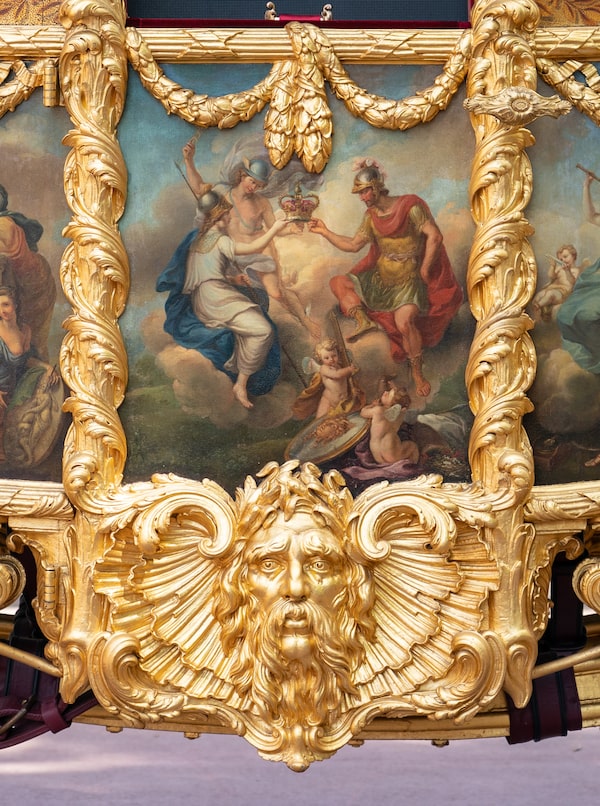
Details from the Gold State Coach, a staple of royal ceremonies such as weddings and jubilee celebrations.Dominic Lipinski/Getty Images
These are not unimportant or hollow rituals, but they are also out of step with our modern world, never mind that so many of us stand as willing and even joyous spectators. And here’s the sticking point, at least for me: While I did hold the late Queen in high regard, and felt sincere affection for her as an individual, I also have profound ethical misgivings about the system of government she represented, namely an inherited constitutional monarchy that is rooted in a legacy of profoundly corrosive inequity. Many of its conventions are, to my mind, risible and frankly indefensible. Simply attempt to parse the meaning behind the honorific “your royal highness” and its innate ridiculousness becomes difficult, if not impossible, to ignore.
When arguments are made in favour of constitutional monarchies in general, and the British monarchy in particular, the stability of such a system of government is often cited. I would argue that much of the stability it conferred, for nearly three-quarters of a century, devolved from the character and behaviour of Elizabeth herself. Now that a new monarch has ascended the throne, the nature of the British monarchy, and its relationship with the realms and territories of the Commonwealth, will undoubtedly change.
I’m certain I’m not alone in feeling unsettled by the death of the Queen, even as I struggle with the notion of an inherited monarchy whose privileges, treasures and wealth belong to a British family whose ancestry is Anglo-German, religion is Anglican Christian, and ethnicity is almost wholly white. It’s a heritage that may once have reflected the background of a large proportion of Canada’s population but cannot credibly claim to do so today.
I think the only answer, at this juncture, is to acknowledge that it is possible for both of these things to be true: We can wonder about and worry over and question, respectfully, the presence of a foreign monarch as our Canadian head of state; and we can, at the same time, feel a genuine sense of grief and loss at the death of a person who, for many, has been a sustaining and comforting presence.
While vanishingly few people can claim to truly have known her, and most of them are long dead themselves, I think it is possible to recognize, in the late Queen, much that is familiar. We only need to set aside the exterior trappings of the life she led, and accept that she was as human, and imperfect, as the rest of us. Whatever faults she may have had, she was never one for breaking promises, and she kept the vows she made on her 21st birthday and again at her coronation. Like her or not, believe in her or not, you cannot argue that she didn’t keep to what she had been asked to do, as best she could, for a length of time that would have been unendurable to many of us.
And now she is gone, and the world that made her is gone, and with her death something has ended, something that we are only just beginning to understand. Her reign began at a time of hope and renewal, a time when the horrors of war had begun to recede and the glories of tomorrow beckoned with technicolour splendour. That the promise and possibilities of the postwar period were in many respects a mirage is an uncomfortable truth we tend to avoid acknowledging. Yet the memory of those days lingers on, even to those of us born decades later, and the Queen, mysterious yet familiar, distant yet comforting, was the living embodiment of the dreams we could never quite bring ourselves to abandon.

The Queen wears the Imperial State Crown at an opening of the British Parliament in 2015.SUZANNE PLUNKETT/AFP via Getty Images
In recent years, as her health declined, my recurring dreams about the Queen took on a note of urgency. I think, looking back, that I must have wanted to explain how I felt about her, and how I associated her with those who had lived through the war and its aftermath, my grandparents and parents among them. More than anything, I wanted the chance, before it was too late, to get to know her.
I hoped that she would unbend, just a little, while we were sharing tea, and tell me something of herself and her true thoughts and feelings about the people she met, observed, and sometimes had to endure. I wanted to know about those endless state dinners marked by indigestible food, conversation with men of little curiosity and fewer morals, and the effort it must have required to remain dignified under the glare of lights and the scrutiny of strangers and the quite literal weight of a diadem freighted down by obligation as much as gemstones.
In those dreams, I wanted to know who entranced her, who annoyed her and if she ever considered handing over the crown to Charles and escaping to a farm in the country. Did she ever look at the red despatch box that landed on her desk every day and think, sod it all, does anyone even notice or care?
She never did answer my questions. Instead, she changed the subject with the ease of nearly a century’s worth of practice, and encouraged me to talk about myself. I wish, now, that I could remember what I told her.
I wonder if I will still dream of the Queen now that she is gone. What would she make of the beckoning and infinite future? And what truths will she choose to share with me, at last, now that her duty is done and she has earned her rest?
Monarchy, past and future: More from The Globe and Mail
Her Majesty’s life in photos
The Decibel
Vicky Mochama, a Globe contributor who writes about the Royal Family, looks back at the Queen’s achievements and what the monarchy’s future might be without her. Subscribe for more episodes.
More from Globe Opinion
Tom Rachman: Brits struggle with their emotions after losing the Queen
Darrel J. McLeod: King Charles can re-envision the Crown-Indigenous relationship
Editorial: Canada is stuck with the monarchy. We should thank our lucky stars for that
